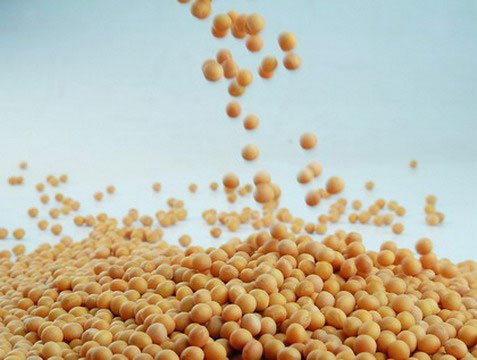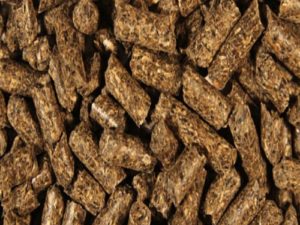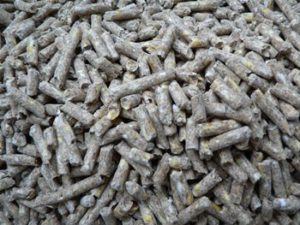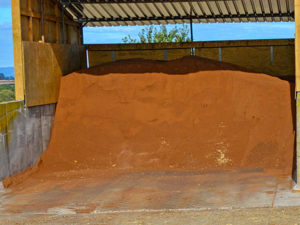Soybean Meal
What is Soybean Meal?
Soybeans (Glycine max) are high protein legume and are the most commonly used protein supplement in dairy diets throughout the world. Soybean meal accounts for nearly 65 per cent of the world’s protein feed demand. The United States, Brazil, Argentina and India are the major producers and exporters of soybean meal in the world.
Soybean meal is palatable, nutrient dense, high in digestibility, and a relatively consistent source of protein. It has a excellent amino acid profile and is a concentrated source of protein and energy. There are several anti-nutritional factors (ANF’s) associated with soybean meal (trypsin inhibitors), which are partially inactivated or minimized during the toasting process.
These ANF’s have the greatest effect on monogastric animals, such as poultry and swine. It has a lesser effect on ruminant animals because of the transformation that occurs in the rumen.
Features & Benefits:
- Protein supplements like soybean meal can be fed to balance out low protein pasture and / or supplements.
- Cows in mid-lactation require about 16 per cent dietary crude protein. In summer pasture protein levels can drop under 16 per cent, and in there situations deficiencies can become an issue. Under these circumstances soybean meal stimulates production levels.
- Soybean meal contains around 50 per cent protein of which 35 per cent is rumen undegradable (“by-pass”) and 65 per cent is rumen degradable
- Soybean meal is rich in lysine, and of the common plant proteins used in animal feeds, soybean meal has the highest percentage of essential amino acids (47.6 per cent).
- Methionine is the first limiting amino acid, therefore high methionine protein supplements like canola meal and fish meal make a good combination with soybean meal.
Storage:
Like all feedstuffs, soybean meal should be stored dry, in bulk bins or placed on cement slabs (away from vermin and covered and protected from the weather accordingly).
Feeding recommendations:
There is no maximum for the use of soybean meal in dairy rations and it can be used to meet protein requirements. Normal feeding rates will be around 0.5-2 kg per head per day. Soybean meal can be fed mixed with silage in the paddock or on the feed pad. It can also be fed via the grain feeding system in the dairy shed. Consult your nutritionist or farm consultant to work out the optimal inclusion level for your particular situation.
Suggested maximum inclusion levels in total rations for other species:
| Animal Species | Max. inclusion level (%) |
|---|---|
| Calves | 20 |
| Beef Cattle | 20 |
| Lamb | 20 |
| Sheep | 20 |
| Broiler | 30 |
| Layer | 30 |
| Starter pig | 10 |
| Finisher pig | 30 |
| Sow | 30 |
Typical nutritional analysis:
| Moisture | 11 % |
| Protein | 47 % |
| ME | 12.7 MJ/kg |
| Depig | 14.8 MJ/kg |
| AMEpoultry | 10.5 MJ/kg |
| Fat | 1.6 % |
| Starch | 2 % |
| Crude fibre | 3.2 % |
| NDF | 12.3 % |
| Ash | 6.6 % |
| Calcium | 0.3 % |
| Phosphorus | 0.7 % |
| Potassium | 2.1 % |
| Sodium | 0.02 % |
| Magnesium | 0.29 % |
| Lysine | 2.89 % |
| Methionine | 0.65 % |
| Cysteine | 0.7 % |
| Threonine | 1.82 % |
| Trotiohan | 0.61 % |





